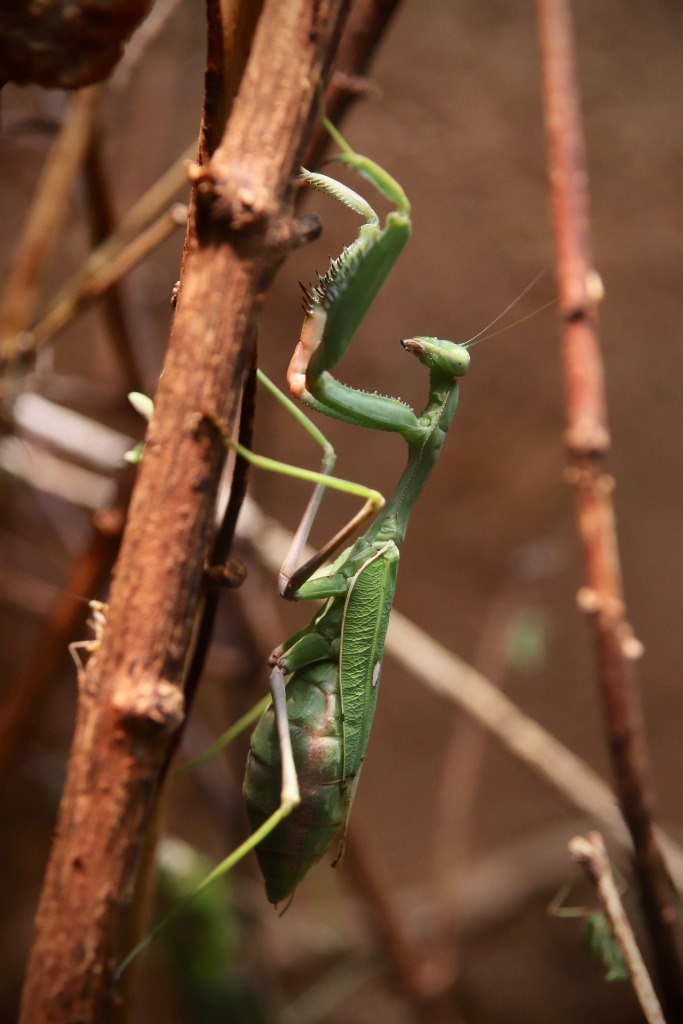
I learned about The Great Grasshopper Infestation when I visited the Pioneer Museum in Fairmont, Minnesota in 2019. Between 1873 and 1877, vast swarms of grasshoppers infested Minnesota devouring crops, gardens, and even cloth, bedding and leather. This plague in the midwest destroyed my great-grandfather’s farm.
My great-grandfather, Franklin Kateley, was born in Vermont in 1843. He moved to Wisconsin with his family in 1848 and then on to St. Charles, Minnesota in 1858. In 1863, they settled in the Lake Belt/Tenhassen area of Martin County, Minnesota. They were among the earliest settlers in the area.
Frank farmed with his father until early 1864 when he enlisted in the Civil War. After the war, he returned to Lake Charles, where he married Carrie Oleson. They settled near Frank’s father in Martin County and had 7 children together between 1867 and 1887. One of them was my grandmother.
Frank had been working on area farms and things were going well, but he wanted his own farm. So, in 1873 he applied for and received a land grant for 160 acres in Jackson, Minnesota. Frank, Carrie and their two children moved to Jackson, built a house and started farming. Unfortunately, 1873 was the beginning of the Great Grasshopper Infestation that lasted several years.
This is the story.
On June 12, 1873, area farmers heard reports of large swarms of grasshoppers working their way toward Minnesota from the Dakotas. The insects were destroying everything in their path. It was reported that with a good wind, they could travel 10 miles in one day. The farmers in Frank’s area of Jackson paid little attention to the news and were unprepared when the grasshoppers arrived. Actually, there was not much they could have done to prepare.
On June 18, 1873, area residents reported what looked like a snowstorm coming from the west. The skies were darkened by clouds of insects and people were afraid. Soon the ground was covered and in a few hours everything was eaten, crops in fields, leaves on trees, every blade of grass, the wool off the sheep, the horse’s harnesses. They feasted for days, even devouring the clothing and quilts farmhands threw protectively over their vegetable gardens.
The farmers thought the harsh winter would destroy the grasshopper eggs, but they were laid deep in the soil. They hatched in the spring, more came from the Dakotas and 1874 was an even worse year. By mid-summer, they had cleaned out many fields of grain, beans, corn and even potatoes. The gardens farmers relied on for food were destroyed.
About that time many settlers lost faith in farming and left. Others lost their farms to foreclosure, including Frank. The crops and gardens were ruined and people were starving.
Minnesota farmers tried many things to get rid of the grasshoppers, including beating them, burning the fields, and raising birds and chickens to eat them. Nothing was successful.
County governments initiated plans to help the destitute farmers, but it was not enough to meet their needs.
On the state level, two governors provided small amounts of economic relief, but their efforts were futile and they were not re-elected. Governor John S. Pillsbury, elected in 1876, had a different philosophy. Instead of providing financial relief, he focused on getting rid of the grasshoppers. These efforts were also unsuccessful. As a last resort, in the spring of 1877, he proclaimed April 27th as a day of fasting and prayer for deliverance from the pests.
Their prayers were answered in the early summer. When the grasshoppers had developed to the point where they could fly, they miraculously, all at once, rose up to the sky and left the area. Sailors on the Great Lakes were said to have found insects floating on the water. They had left the area without depositing any eggs. The grasshopper plague was ended. Over 500,000 acres of prime farm land had been destroyed.
Governor Pillsbury’s Day of Prayer received all of the credit for ending the plague and he was re-elected to two more terms.
After losing his farm, Frank moved back to the Lake Belt/Tenhassen area. He worked on other people’s farms and at various other jobs, including blacksmithing. He never owned another farm.
Response to 52 Ancestors Weekly prompt: Witness to History
